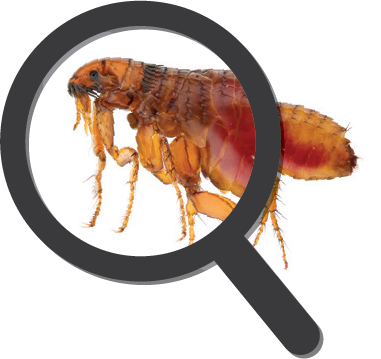Does my dog have fleas? Signs and symptoms
‘Does my dog have fleas?’ is a common worry for dog owners. After all, fleas are unwelcome parasites which affect pets, people and homes. Knowing the signs and symptoms to look out for will mean you can identify and treat a flea problem more quickly. And if your dog does have fleas, knowing how to get rid of them and prevent future flea infestations will help you keep your dog and your home flea free.
How do dogs get fleas?
Dogs can get fleas from almost anywhere. It could be a ‘hitchhiker’ flea that has jumped on during a walk. Or very occasionally adult fleas may jump from one animal to another if they are in close contact.
Providing you follow a regular flea treatment routine, it’s unlikely that this would lead to a flea infestation. However, if you don’t routinely treat your dog for fleas or there has been a gap in treatment, a flea infestation can occur.
Contrary to popular belief, fleas are equally at home in a clean house as a dirty one, so you needn’t feel embarrassed about asking for help with controlling them.

How to tell if your dog has fleas
The easiest way to tell if your dog has fleas is to know what signs and symptoms to look out for.
1. Scratching, biting and licking
All dogs will scratch, bite or lick themselves as part of the grooming process. But, if your dog appears to be excessively scratching, biting or licking, it could be because of fleas.
2. Hair loss and skin problems
Hair loss can result from the excessive scratching and biting, but it can also be due to Flea Allergy Dermatitis (FAD). This is a condition both pets and people can suffer from. During a flea’s blood meal there is a transfer of saliva. If you or your dog are sensitive to flea saliva, the body will react by producing an allergic response. This is seen as a rash which is often painful and itchy.
3. Change in behaviour
Fleas can cause a great deal of discomfort and irritation for your dog. You may notice they are more irritable than usual, behaving differently, or seeming to react to something that isn’t there.
4. Black specs in your dog’s coat or bedding
These black specs are likely to be flea dirt, which is flea faeces (poo) containing undigested blood from your dog. If you haven’t flea-treated your dog for a while, this flea dirt could be a sign of a flea infestation, and you should take action immediately. A small amount of flea dirt is sometimes seen on correctly treated pets. If you’re up-to-date with your dog’s flea treatment and have protected your home, it is unlikely you have a flea infestation.
5. Pale gums
A dog with a severe flea infestation may have pale gums, which can be a sign of anaemia. This occurs when the amount of red blood cells being lost is greater than the amount of new red blood cells being produced. Fleas can drink up to 15 times their own weight in blood per day, so this is more common in puppies than adult dogs.
My dog is showing signs of fleas, what should I do?
If your dog is showing signs of fleas, you should check them immediately and treat if necessary.
If you have more than one pet, it is important to check and treat all animals for fleas. Even if one of your pets stays indoors, they could still become infested by the fleas picked up by your other pets. The most common flea found in the UK, the cat flea (Ctenocephalides felis) can affect both cats and dogs.
Also interesting

How to check your pet for fleas



